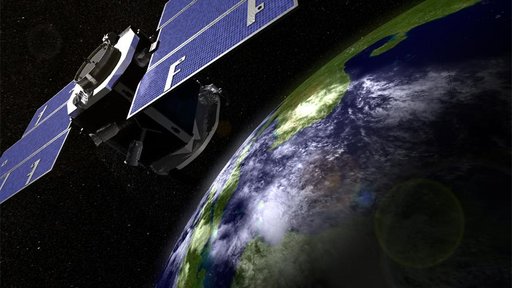NASA officially has ended the CloudSat mission, an Earth Observation satellite that has provided invaluable data for eighteen years.
Launched on April 28, 2006, aboard a Delta II rocket, CloudSat has been instrumental in humanity’s understanding of Earth’s atmosphere and precipitation patterns.
Initially planned for a 22-month mission, the CloudSat was tasked to provide the first-ever global survey of cloud properties (structure and composition of clouds) from space.
The CloudSat Mission
The CloudSat Mission was part of NASA’s A Train Constellation, a collection of Earth-observing satellites that orbit the Earth in a polar orbit, crossing the equator at around 1:30 PM local time within minutes of each other. The satellites fly one behind the other near each other on the same track. The primary mission of the CloudSat was to observe and measure cloud properties like the vertical structure, water content and ice particle size.
Using an advanced radar system called Cloud Profiling Radar, CPR in short; CloudSat could penetrate through clouds revealing their internal structure properties.
Cloud Profiling Radar
CPR’s 94 GHz wavelength was a thousand times more sensitive than the typical ground-based weather radars, offering great insights into the vertical structure and water/ice content of clouds. This technology allowed scientists to observe clouds in three dimensions, not as flat images on a screen but as 3D slices of atmosphere bristling with ice and rain, according to NASA officials revealing the intricate processes that occur within these atmospheric features.
With an exceptional view on the vertical profiles of cloud layers, scientists could study the altitude, composition and thickness of clouds with great precision. This understanding proved to be crucial for climate modelling, weather prediction and measuring cloud’s impact on Earth’s energy balance which sheds light on how the clouds can both cool Earth by reflecting sunlight and warm it by trapping heat.
For the first time, scientists could observe clouds and precipitation together, said Graeme Stephens, the mission’s principal investigator at NASA’s Jet Propulsion Laboratory in Southern California in a blog post on the NASA website.
“Without clouds, humans wouldn’t exist, because they provide the freshwater that life as we know it requires,” he said in a NASA blog post. “We sometimes refer to them as clever little devils because of their confounding properties. Clouds have been an enigma in terms of predicting climate change.”
Meteorologists gained insights into storm intensity and predicting severe weather events like hurricanes, typhoons, and cyclones by analyzing cloud structures.
The End of an Era
The decommissioning process was carefully and deliberately planned, with The Cloud Profiling Radar instrument switched off in December 2023 and subsequently CloudSat being lowered into an orbit that will eventually time lead to the satellite’s disintegration in the atmosphere, ensuring a sustainable and responsible end. Scientists still have access to its extensive dataset which is publicly available to researchers worldwide keeping the legacy alive.

Shambhu Kumar is a science communicator, making complex scientific topics accessible to all. His articles explore breakthroughs in various scientific disciplines, from space exploration to cutting-edge research.


